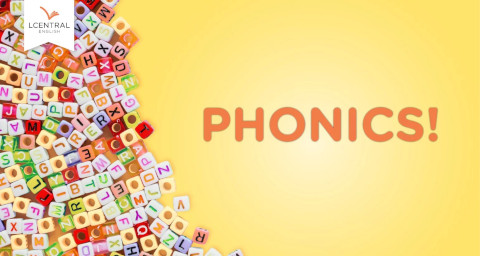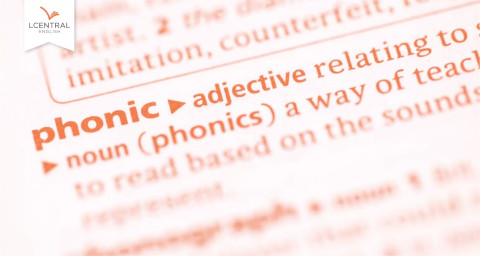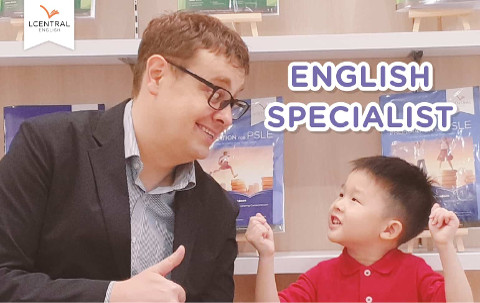Learning to read is a puzzle comprising many pieces.
Phonics is just one.
Phonics, phonics, phonics.
Take a look at the proclamations of almost any kindergarten in Singapore and you’ll see phonics featured prominently, exhibited as though it’s some sort of panacea, a cure for all English ailments. While teaching letter sounds to children is very important, there’s more to learning to read than phonics activities and games.
What is Phonics?
The Oxford Dictionary defines phonics as “a method of teaching people to read by correlating sounds with symbols in an alphabetic writing system.”
This might sound a little complex, but it’s actually rather straightforward:
- An alphabetic writing system is simply a language that uses letters to write, like English, French or Arabic, rather than another way of writing such as Chinese characters (known as ideograms) or Egyptian hieroglyphs.
- The English alphabet is made up of the set of the letters from a through to z (pronounced “zed” in British English and “zee” in American English). Note that ‘a‘ is not an alphabet, but a letter. The same goes for ‘b‘, ‘c‘, and so on. Each of these is a letter. However, a set of letters is called an alphabet.
- When we teach people the sound that each letter represents, we are teaching phonics.
How Does it Help?
The alphabetic writing system stems from a truly profound insight of language: that all the things we say – whether it be haggling over the price of lamb in a market, designing a ship, or sharing your deepest joys and hopes – are just combinations of a fairly small set of sounds. The amazing complexity of human communication is produced from the building blocks of sound.
With that insight, the next realisation is that representing language at the level of the sound, as opposed to the level of the word, is amazingly efficient. Engaging children in phonics activities and games is a process of sharing this realisation. It always amazes me how quickly children, even very young children, accept this phenomenal, and rather abstract, insight into language.
The goal of phonics instruction is for children to know that each letter represents a sound, so when they see a letter, they can use their knowledge of letter-sound relationships to work out what sound the letter makes. This is a fundamental reading skill.
Challenge #1: So Many Sounds
How many letters are there in the English alphabet? Easy, right, there are 26.
Now for a slightly harder question: how many sounds are there? In standard English pronunciation, there are 44 sounds.
Since phonics instruction is a step-by-step approach to getting children to draw a connection between sounds and letters, we immediately encounter a challenge knowing that there is not one unique sound for each unique letter. Interestingly, this problem dates back about 2800 years to the Greek alphabet and is generally overcome by using combinations of letters to signal changes of sound. This is explained further in this article that takes us beyond basic phonics.
This means we can’t simply teach one sound for each letter of the alphabet and then stop there. Using the alphabetic principle to teach reading requires a deeper knowledge of how letters correlate with sounds. Skilled, articulate teachers using a variety of approaches and following a structured programme has tremendous advantages.
Challenge #2: Phonemic Awareness
This often comes as a surprise to adults, but it’s right at the heart of learning to read. Knowing that the letter ‘u‘ makes a sound and the letter ‘p‘ makes a sound is a good first step. But if I can’t blend those sounds together, I can’t go any further. Smoothly blending the sounds is a skill in and of itself. It is part of a large skillset known as phonemic awareness.
Studies on how children learn to read repeatedly find that phonemic awareness is absolutely essential. While almost all parents, and many teachers, may view reading as primarily a visual phenomenon, there is a hugely important auditory component underpinning it. This makes sense when we think about natural language development and realise that oral language is the foundation of written language.
Challenge #3: When Letters Don’t Help
Finally, some words simply deviate so far from the correspondence between letters and sounds that the letters give little guide to the pronunciation of the word. When the alphabetic principle breaks down, phonics and phonemic awareness cannot help us forward. This small class of words requires a different approach. See our article on sight words here.
This article covers the importance and limitations of phonics with specific reference to the complex letter-sound relationships in English, the necessity for phonemic awareness instruction, and the need for teaching sight words. These are just a few of the key foundational reading skills. Covered elsewhere, we go into the importance of an oral language foundation, the importance of vocabulary, and why it is so important that your child enjoys reading.
Read the rest of the “Preparing Your Child to Read” four-part series here:
Part 1: Developing Pre-reading Skills
Part 2: Why Does my Child Confuse b and d?
Part 4: Going Beyond Basic Phonics
This article is brought to you by LCentral.
Book a FREE consultation with an LCentral English specialist to gain insights into your child’s early literacy development and learning needs! Click on this link to schedule an appointment at a centre near you.
* * * * *
Like what you see here? Get parenting tips and stories straight to your inbox! Join our mailing list here.
Want to be heard 👂 and seen 👀 by over 100,000 parents in Singapore? We can help! Leave your contact here and we’ll be in touch.






















































